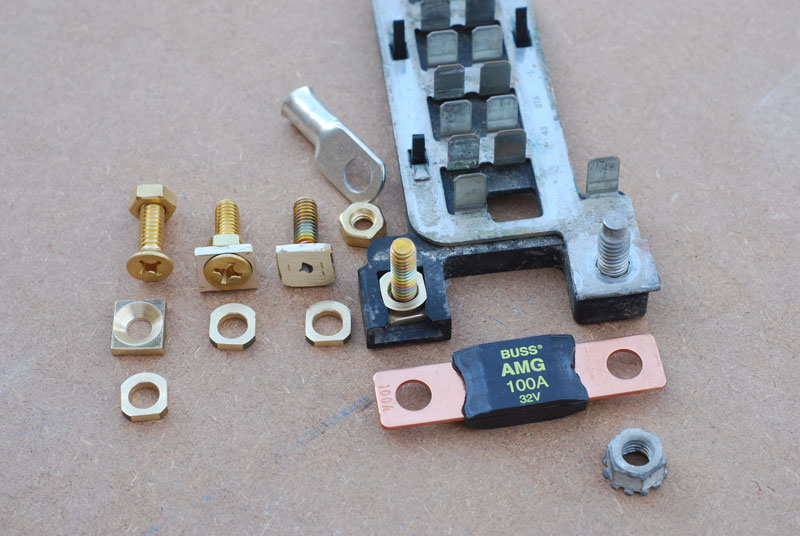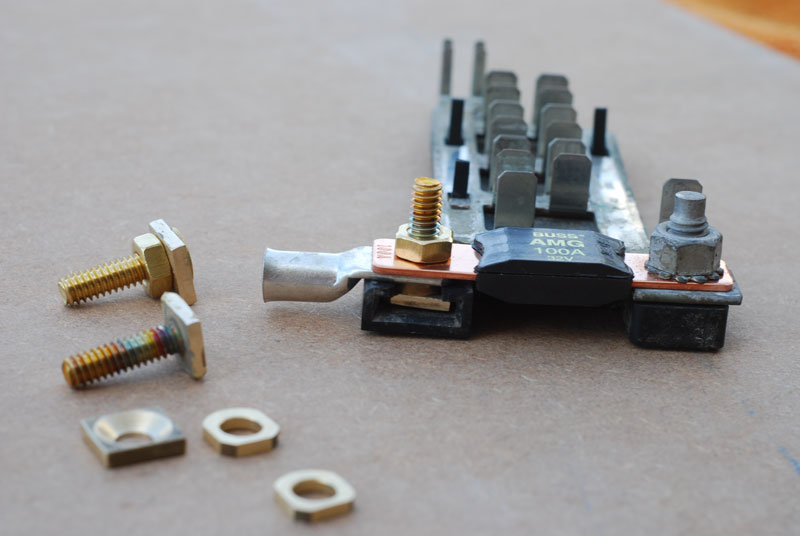- Location
- In a strange land
I am trying to clean up the mess which has resulted from multiple previous owners making multiple attempts to tie into the electrical system. Everything between the battery, alternator and underhood fuse block is a fiasco. It's clean up time.
I know what I want to do with most of this mess, but the alternator leaves me with a couple of questions. First off, what was the original gauge wire between the alternator and the fuse block? I currently have two wires running between those two points. Apparently one wire wasn't enough.
Neither of the two is entirely original. One looks like some Monster Cable product, and the other is a spliced together job which is black with a white stripe at the alternator end and green where it connects to the fuse block.
The spliced wire gives rise to another question: Was there originally a fusible link between the alternator and the fuse block? Could it be that a PO cut out the fusible part? And if so, should I be putting some form of protection back in place here?
I am not particularly fond of fusible links. Is there anything special about them such that a high amp fuse would not suffice?
The goal is to fix this once and fix it right.
I know what I want to do with most of this mess, but the alternator leaves me with a couple of questions. First off, what was the original gauge wire between the alternator and the fuse block? I currently have two wires running between those two points. Apparently one wire wasn't enough.
Neither of the two is entirely original. One looks like some Monster Cable product, and the other is a spliced together job which is black with a white stripe at the alternator end and green where it connects to the fuse block.
The spliced wire gives rise to another question: Was there originally a fusible link between the alternator and the fuse block? Could it be that a PO cut out the fusible part? And if so, should I be putting some form of protection back in place here?
I am not particularly fond of fusible links. Is there anything special about them such that a high amp fuse would not suffice?
The goal is to fix this once and fix it right.



